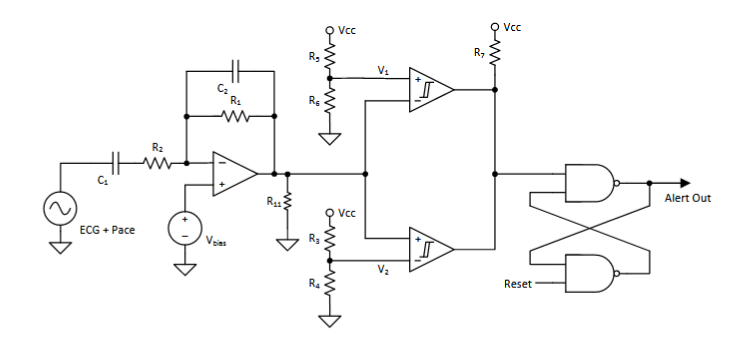Other Parts Discussed in Thread: ADS1299, ADS1298
I'm intending to use the ADS1299 for ECG application due of its better noise ratings.
Since is chip is more suited for EEG applications there are no ECG specific hardware features in it like WCT, Pace detection as expected.
However for hardware pace detection I found the document "Hardware Pace using Slope Detection". It shows a a ckt as under:
The standards though required pace detection to be measured on each Lead, so from the looks of it this circuit would be needed on all channels.
I have seen similar block diagram in the ADS1298 datasheet where both the pace buffers are fed from even and odd channels. To do this external to the ADS1299 would need quite a bit of circuitry.
Am I inferring this correctly?
Also I see that after reading another post regarding pace detection a user had written that the pace amplitude being detected was very low, so there is probably scope for improvement in the above circuit.
Of course to get over all this one can use the ADS1298 and it has internal pace buffers but I would like to use the ADS1299, and implement the WCT and Pace detection in external hardware.
I'd like to hear from the experts here if there is any better way of doing this, especially from the point of reducing the chip count.


